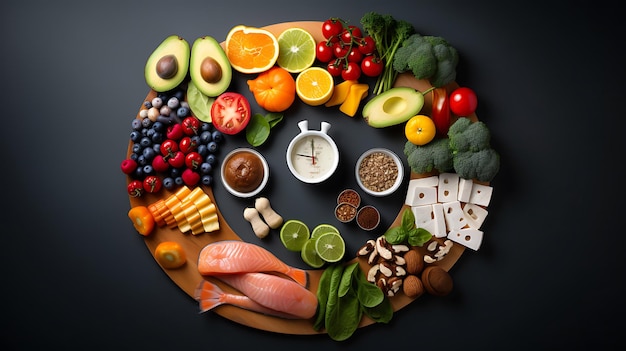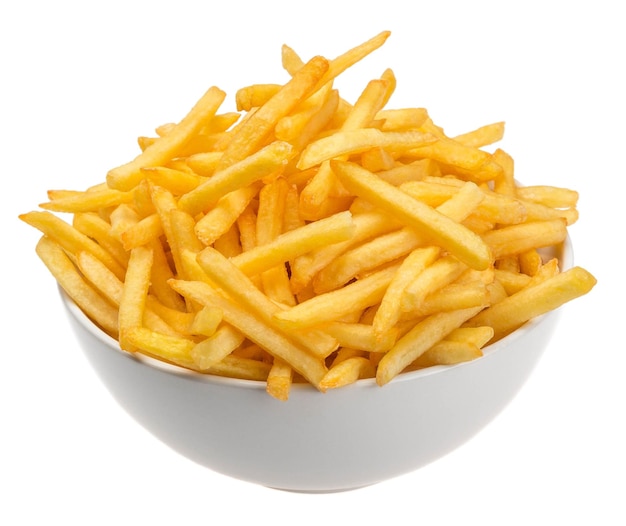Quick Read
A Delicious Exploration of Frites: History, Preparation, and Variations
Ah, Frites, those savory, golden sticks of potato perfection that have captured the hearts and taste buds of people all around the world! But where did they come from, and how did they become such a beloved culinary sensation? Let’s embark on a mouth-watering journey through the history, preparation, and tantalizing variations of everyone’s favorite Belgian export.
A Brief History of Frites
The origin of frites can be traced back to Belgium in the late 1800s. One popular legend claims that they were first introduced by a street vendor named Meire in the town of Bruges, who, tired of selling disappointing mashed potatoes, decided to slice them thinly and deep-fry them instead. Another story credits a French chef named Pierre Cartier with inventing frites in 1780 when he accidentally left potatoes in oil too long while preparing a dish for the Duke of Brabant. Whatever their true origins may be, frites quickly gained popularity among the Belgian populace and eventually spread to other parts of Europe and beyond.
The Art of Preparing Frites
To prepare authentic frites, russet potatoes are typically cut into sticks of uniform size and blanched in hot oil at a temperature between 325°F (163°C) and 350°F (177°C). After being lightly salted, the potatoes are then deep-fried at a higher temperature of around 365°F (185°C) until they achieve a crispy, golden exterior and a tender, fluffy interior. Some traditionalists argue that using a specific type of oil, such as peanut or palm oil, contributes to the perfect flavor and texture.
Delectable Variations of Frites
While classic frites are a delight in their own right, there are numerous enticing variations that can cater to different palates and preferences. Some popular options include:
Frites with Mayonnaise
Curry Frites
Frites with Sauce Mayoise et Ketchup
Belgian Frites with Belgian Beer
A Belgian favorite, mayonnaise is the quintessential dipping sauce for frites. Its creamy, tangy flavor complements the savory potato sticks perfectly.
For those who enjoy a bit of heat and spice, curry frites are an excellent choice. The crispy potatoes are tossed in a flavorful, aromatic curry powder mixture that adds an exciting kick.
This French variation involves serving frites with both mayonnaise and ketchup. The combination of the two sauces creates a delightful balance of richness and tanginess.
A visit to Belgium would not be complete without trying frites accompanied by a glass of local beer. The malty, hoppy flavors of the beer perfectly complement the savory, crispy potatoes.
Frites: A World of Crispy, Golden Delights
Frites, also known as French fries or chips, are a beloved dish enjoyed by millions around the world. This simple yet delicious culinary creation consists of sliced potatoes that are deep-fried until they achieve a crispy, golden exterior and a tender, fluffy interior.
A Global Sensation
Frites have become an integral part of various cultures and cuisines, with their origins dating back to the 17th century in Belgium. However, it was not until the late 19th century that they gained international fame when Thomas Edison served them at the St. Louis World’s Fair in the United States. Since then, frites have spread across continents, with each region adding its unique twist to this versatile dish.
A Rich Cultural History
The significance of frites in various cultures cannot be overstated. In Belgium, they are considered a national symbol and are often served with mayonnaise or ketchup. In the Netherlands, they are called patat and are typically eaten with satay sauce or curry ketchup. In the United States, frites have been transformed into a fast-food staple, often served with ketchup or cheese sauce. And in France, they are known as pommes frites and are typically served with mayonnaise or aioli.
An In-Depth Exploration of Frites
In this article, we will provide an in-depth understanding of the history, preparation, and variations of frites. We will delve into their origins, explore the different ways they are prepared around the world, and uncover the secrets behind their irresistible flavor. So, grab a plate of frites and join us on this delicious journey!

History of Frites
Origin of Frites: Belgium or France?
The origin of frites, those delicious golden sticks of fried potatoes, has been a subject of much debate between Belgium and France. Both countries claim to be the birthplace of this beloved dish.
Historical Evidence Supporting Belgian Origin
Belgium asserts its claim based on historical evidence. The first recorded mention of frites, or “patates frites” in French, was in the 1781 cookbook “Le Cuisinier Meilleur,” written by Belgian chef Marie-Antoine Carême. Furthermore, a painting from the late 1600s depicts street vendors in Mechelen, Belgium, selling what appear to be frites.
Historical Evidence Supporting French Origin
However, France also presents compelling evidence. In the 18th century, Thomas Jefferson, the American ambassador to France, wrote in his memoirs about a dish he tried in Paris called “pommes dauphine,” which were potatoes coated in batter and deep-fried. Some historians argue that this dish evolved into what we now know as frites.
Evolution and Popularity of Frites over Time
Despite the ongoing debate about their origin, it’s clear that frites have a rich history and have spread far beyond their supposed birthplace. The dish gained popularity in the late 1800s when mobile vendors began selling frites from carts at fairs and on streets.
Early Spread within Europe
Early 20th century: Frites spread from Belgium and France to other parts of Europe, gaining a strong following in the Netherlands, Germany, and Scandinavia.
Introduction to North America
1960s: Frites made their way to North America. Belgian immigrants brought the dish with them and opened restaurants, introducing Canadians and Americans to this tasty treat.
Globalization and International Influence
Late 20th century: With the globalization of food culture, frites continued to spread around the world, often accompanied by other Belgian culinary exports like waffles and chocolate.
Modern Day:
Today, frites are a staple in many countries and have become a symbol of Belgian and French cuisine. While the debate over their origin may never be fully resolved, one thing is certain – frites will continue to delight and satisfy food lovers worldwide.

I Preparation of Frites
Ingredients:
The essential ingredients for making perfect fries include potatoes, oil, and salt. The type of potatoes used can greatly impact the final product.
Process:
Choosing the right potatoes:
Start by selecting the appropriate potatoes for your frites. Russet or Yukon Gold varieties work best due to their high starch content that helps create a crispy exterior while keeping the interior fluffy.
Preparation techniques: Belgian-style vs. French-style
There are two popular methods for preparing frites – the Belgian-style and the French-style. Belgian fries are larger in size, double-fried, and traditionally served with mayonnaise. In contrast, French fries are thin and once-fried, typically accompanied by ketchup or other dipping sauces.
Importance of temperature control during frying:
Maintaining the correct temperature while frying is crucial for achieving the desired texture and taste. For optimal results, heat your oil to around 325°F (163°C) for blanching the potatoes and then raise it to about 375°F (190°C) for final frying.
Effects on texture and taste:
Proper temperature control ensures an evenly cooked exterior with a crispiness that beautifully balances the soft interior of the frites. Additionally, it enhances their flavor by caramelizing the natural sugars in the potatoes.

Variations of Frites
Frites, also known as Belgian fries or French fries, are a beloved culinary staple that comes in various forms across the world. Let’s explore some of the most popular variations and their unique characteristics.
Belgian-style Frites:
Belgian-style frites are renowned for their thicker and larger cuts. The preparation method involves twice-frying the potatoes to ensure a crispy exterior and a tender, fluffy interior. This
cultural significance in Belgium
can be traced back to the late 1800s when street vendors started selling these delicious treats.
French-style Frites:
In stark contrast, French-style frites are characterized by their thin and long shape. They undergo a
single-fried method
, giving them a lighter texture with a more golden exterior. Although their origins can be debated, they have become synonymous with French cuisine and are often served with mayonnaise or ketchup.
Other International Variations:
Beyond Belgian and French, there are numerous other international variations of frites that add unique regional twists on this classic dish. For instance,
Dutch frites:
are typically served with mayonnaise and are available in various toppings like onions, satay sauce, or curry sauce.
Irish frites:
are often called “chip shop chips” or simply “chips.” They are typically cooked in beef drippings, giving them a richer and deeper flavor.
Canadian poutines:
are famous for their fusion of frites, cheese curds, and gravy. This delightful combination creates a savory and comforting dish that is a staple in Canadian cuisine.
These variations showcase the versatility and adaptability of this simple yet delicious potato creation, making it a beloved dish around the world.

Health Considerations and Nutritional Information
Understanding the role of macronutrients and micronutrients in our diet is essential for maintaining optimal health. Let’s explore these essential nutrient categories.
Macronutrients:
- Calories: The energy units our bodies use to function
- Carbohydrates: Essential for energy production, primarily sourced from grains, fruits, and vegetables
- Protein: Crucial for growth, tissue repair, and immune function
- Fat: Provides energy, aids in nutrient absorption, and insulates the body
Micronutrients:
Vitamins:
- Essential organic compounds required for various bodily functions
- Vitamins A, C, D, E, K, and B-complex are essential for humans
Minerals:
- Inorganic elements that aid in bodily functions, including growth, muscle function, and bone health
- Major minerals include calcium, phosphorus, potassium, sodium, and magnesium
Dietary fiber:
- An indigestible type of carbohydrate that aids in digestion and promotes regular bowel movements
- Sources include fruits, vegetables, whole grains, and legumes
Health benefits and concerns:
Antioxidants:
- Protect cells from damage caused by free radicals, which can lead to disease
- Found in various fruits and vegetables, including berries, leafy greens, and citrus fruits
Heart health:
- A balanced diet, regular exercise, and adequate nutrient intake are key components of heart health
- Consume foods rich in healthy fats (monounsaturated and polyunsaturated), fiber, vitamins C and E, and minerals such as potassium and magnesium
Inflammation:
- Chronic inflammation can lead to various diseases, including heart disease and cancer
- A balanced diet rich in fruits, vegetables, whole grains, lean proteins, healthy fats, and antioxidants can help reduce inflammation
- Limit intake of processed foods, added sugars, and unhealthy saturated fats to minimize chronic inflammation

VI. Conclusion
As we come to the end of our exploration into the world of frites, it’s important to reflect on the key points discussed in this article. Firstly, we delved into the history and origin of frites, tracing their roots back to Belgium. We then discovered the various methods used in their preparation, from double-frying to using specific types of potatoes.
Exploring Frites Styles and Variations
Next, we encouraged you to venture beyond the classic frites and explore the myriad of styles and variations that exist around the world. Whether it’s the curry-infused frites of India, the garlic-parmesan variety from the United States, or the indulgent Belgian-style frites smothered in mayonnaise, there’s a world of flavors waiting to be discovered.
Cultural, Culinary, and Personal Significance
Finally, it’s important to acknowledge the cultural, culinary, and personal significance of this beloved dish. Frites have long been a symbol of unity, bringing people together from all walks of life to enjoy a simple yet delicious treat. They’ve also played a crucial role in culinary history, inspiring new dishes and flavors around the world. And on a personal level, frites have the power to evoke memories, transport us to different places, and bring joy to our lives in the simplest of ways.
Final Thoughts
In conclusion, frites may seem like a simple dish, but they offer so much more than just a savory snack. They represent the rich tapestry of our cultural and culinary heritage, as well as the personal experiences that make life worth living. So whether you’re a seasoned frites connoisseur or just discovering this delicious treat for the first time, we encourage you to explore all that frites have to offer. Happy frying!




